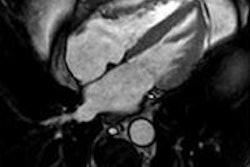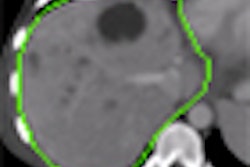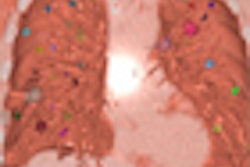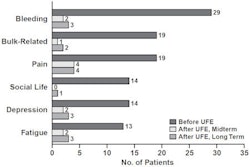FDG-PET/CT exams may be able to identify lung cancer patients who are highly susceptible to developing radiation-induced lung toxicity early during radiation therapy, according to researchers at the Maastricht University Medical Center in the Netherlands.
The ability of oncologists to identify patients at risk early in treatment could potentially enable these patients to switch to another local therapy, such as surgery, or to administer medications that may prevent radiation-induced lung toxicity, such as statins and antitumor necrosis factor-alpha drugs.
The study, conducted by radiation oncologist Dr. Dirk De Ruysscher and colleagues, identified a correlation between standardized uptake value measurements in the normal lung of a patient and development of radiation-induced lung toxicity. It was published in the June issue of Radiotherapy and Oncology (2009, Vol. 91:3, pp. 415-420).
The prospective study involved 18 patients with stage III non-small cell lung cancer who received three cycles of induction chemotherapy followed by radiation therapy a minimum of 14 days after all chemotherapy cycles were completed. All patients received a treatment planning PET/CT scan prior to the start of radiation therapy and at the seventh and 14th day of treatment.
Patients were irradiated twice daily, with a fraction size of 1.8 Gy. The radiation dose was individually escalated until a dose-limiting normal tissue constraint was reached. A maximal dose of 19.0 Gy was allowed for the lungs and 54.0 Gy for the spinal cord. The median total dose was 61.2 Gy, with a range of 54.0 to 79.2 Gy.
Acute toxicity was scored at the time of the first PET/CT scan, and at seven-day intervals during and after radiation treatment until acute toxicity decreased. Patients were subsequently evaluated for toxicity every eight weeks thereafter.
Six patients did not develop any toxicity. Six patients developed grade 1 dyspnea, or shortness of breath following radiation therapy, while three patients developed grade 2 toxicity and three patients developed grade 3.
De Ruysscher discovered a correlation in that patients who had a fivefold maximal FDG increase in the lung two weeks after the initiation of radiotherapy developed radiation-induced lung toxicity. Patients who only had a twofold maximal FDG increase did not develop this toxicity. The areas of increased FDG uptake were located in the parenchyma of the lungs and around the larger vessels.
Related Reading
Radiation therapy for lung cancer patients may affect normal lung tissue, October 27, 2000
Copyright © 2009 AuntMinnie.com



















